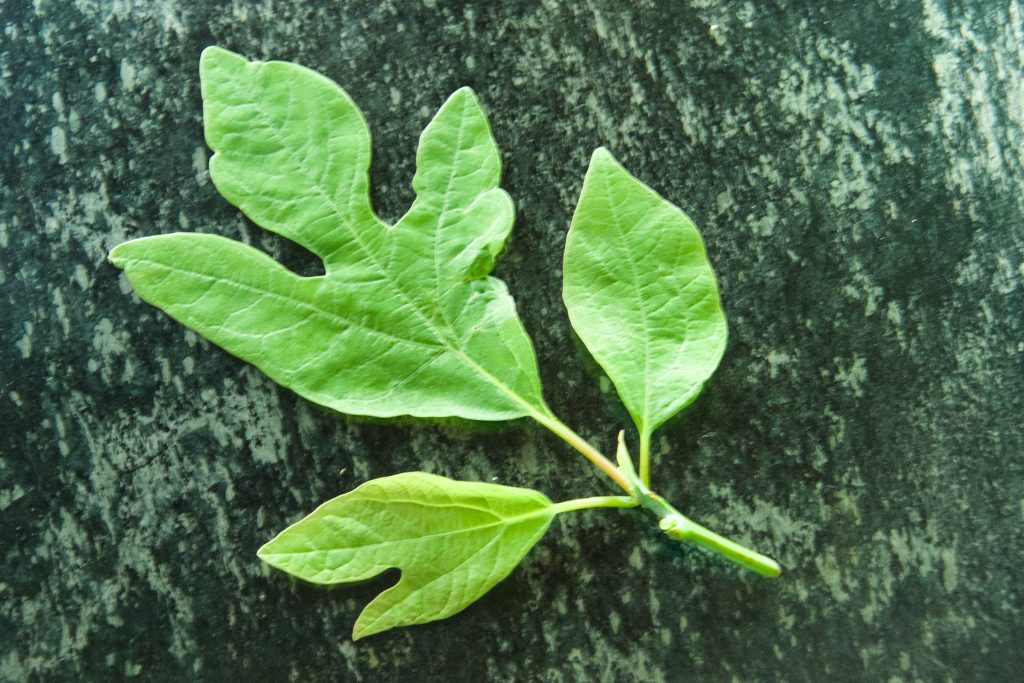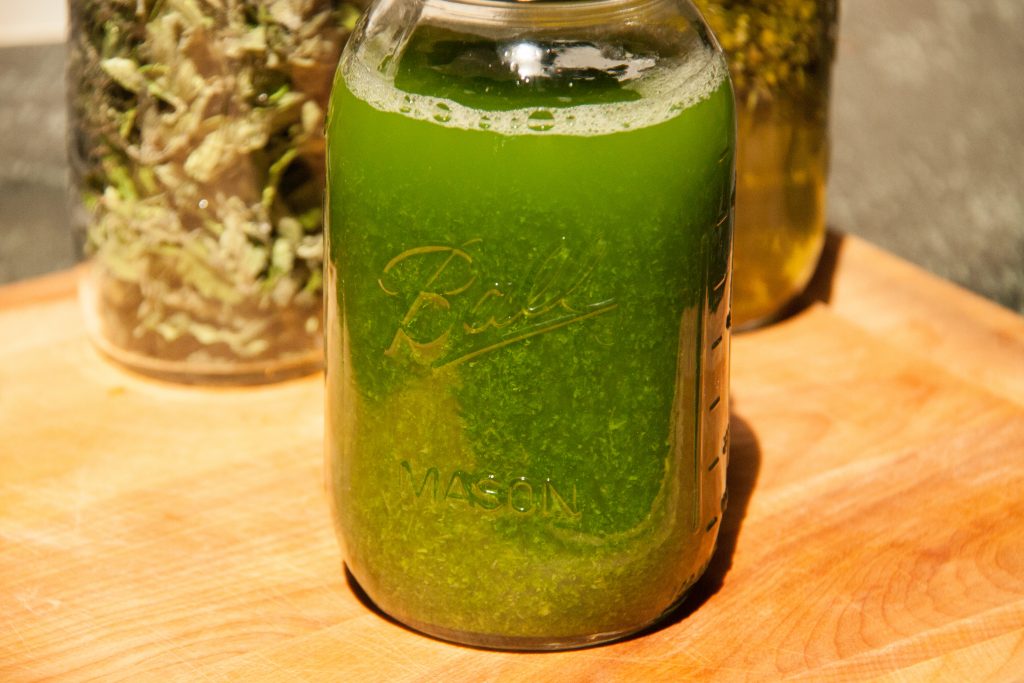
That’s right. Sassafras Leaf Infused Vodka, aka Sassy vodka. It puts the wild in wildcrafted cocktail.
Foragers know there’s controversy surrounding sassafras and one of its components: safrole. The FDA deems it a carcinogen, but many foragers and herbalists consider that to be untrue, and continue to use it regularly.
But that, my friends, is a subject for another post. Because this recipe calls for sassafras leaves, and even the inconsistently overly-cautious FDA considers sassafras leaves to be safe. They contain no detectable levels of safrole, so unless you have something against delicious vodka, please read on.
Dried sassafras leaves are known in Cajun cooking as filé or gumbo filé. Fresh, young leaves are dried, then ground into a powder and served in a shaker at the table along with your bowl of gumbo. When the powder meets the soup, it releases its magical, mucilaginous properties and voila! Your gumbo is thickened. I tell you this now because that magical mucilaginous property is enormously apparent in the making of this vodka. It kind of freaked me out the first time in a “wow, look at that, it’s gross but cool” kind of way. Consider yourself forewarned.
Here’s What You Need to Make Sassafras Infused Vodka:
- 1 750 ml. bottle of vodka
- 2 cups, loosely packed, roughly chopped, fresh, young sassafras leaves
NOTE: Harvest only young sassafras leaves in late spring or very early summer. Foliage becomes more mucilaginous as the season progresses, and by mid summer, it will be too old, and you won’t be able to separate the booze from the mucilage. Ask me how I know.
Here’s What You Do to Make Sassafrass Infused Vodka:
Give your sassafras leaves a rough chop, then put them in your blender and cover them with the vodka. Pulverize. Pour the liquid into a quart canning jar, put the lid on tight, and let it sit overnight or for about eight hours.
You’ll notice that over time the liquid separates, changing from solid green to three separate layers of brown, yellow, and green.
Pour the liquid through a yogurt cheese strainer or a gold coffee filter and prepare to be amazed. The dark liquid passes easily through the strainer, but its silky, slightly thickened texture tells you something’s going on.
At the bottom of your canning jar lies a green ball of goo. As I type this I’m wondering if this is what they used to make the kids’ toy Slime. Because that’s what it looks like. Once you’ve strained off all the clear, non-slimy liquid, you can marvel at the goo for a while, then throw it away.
Unfortunately, because of the extreme mucilaginousness of the sassafras leaves, you’re going to lose a about 1/3 of the vodka. I know. It’s sad. If you try this with leaves harvested at midsummer or later, the entire batch will become a mucilaginous mess, completely undrinkable. Don’t waste your time or materials.
The strained liquid will be dark brown. Its flavor is slightly spicy, slightly lemony, slightly sweet, and nicely balanced among all three. I keep mine in the fridge, ready at any moment to be used in an Enigma. My new favorite summer cocktail.




You could make gumbo with the slime…
Here’s a link (commercial, not mine), that sells powdered sassafras leaves for that purpose.
https://www.thespicehouse.com/gumbo-file-powder-powdered-sassafras-leaves
It also makes me wonder if you could use powdered leaves to make the vodka in the winter, and what the difference would be.
D-oh, of course!
I’ve been wondering about using the powdered filé, too. I have some I dried last year. Guess I’ll have to try it!
Since the green goo is highly mucilant, what if you used it to make an Infusion/decoction with it?
First, thank you for teaching me a new word: mucilant! And second, that idea never occurred to me. The goo is the result of an alcohol infusion, but why not take the goo and see what it does with water? I’ll try that next time!